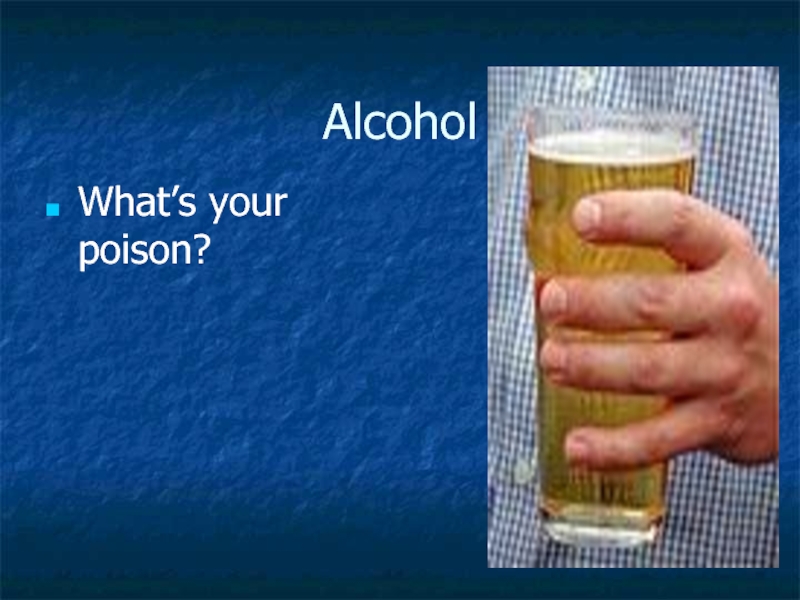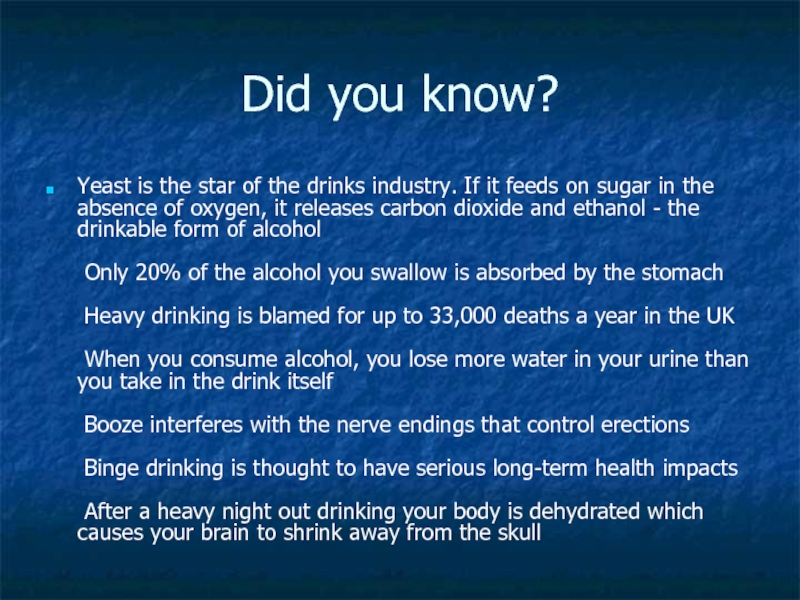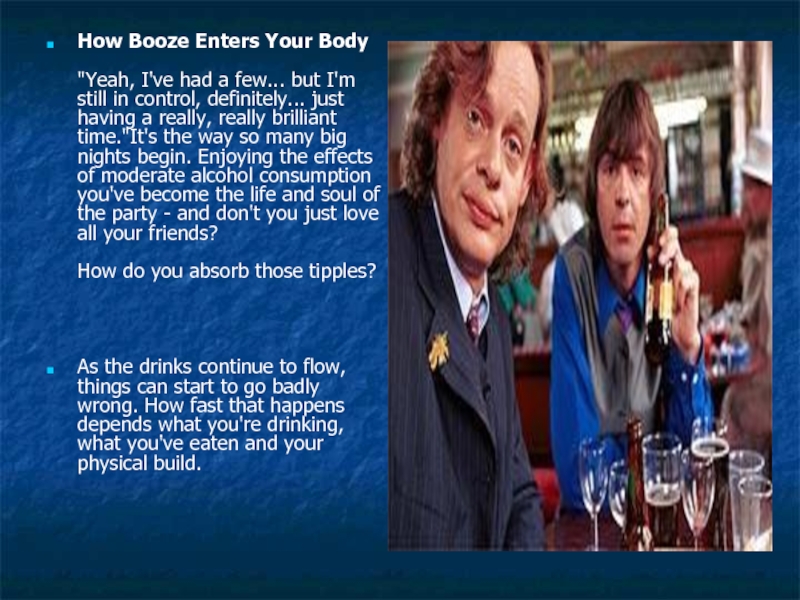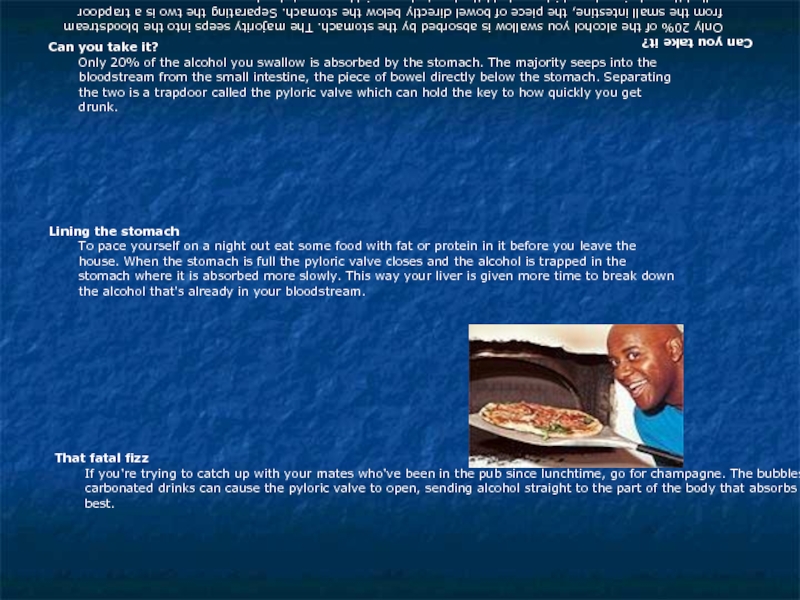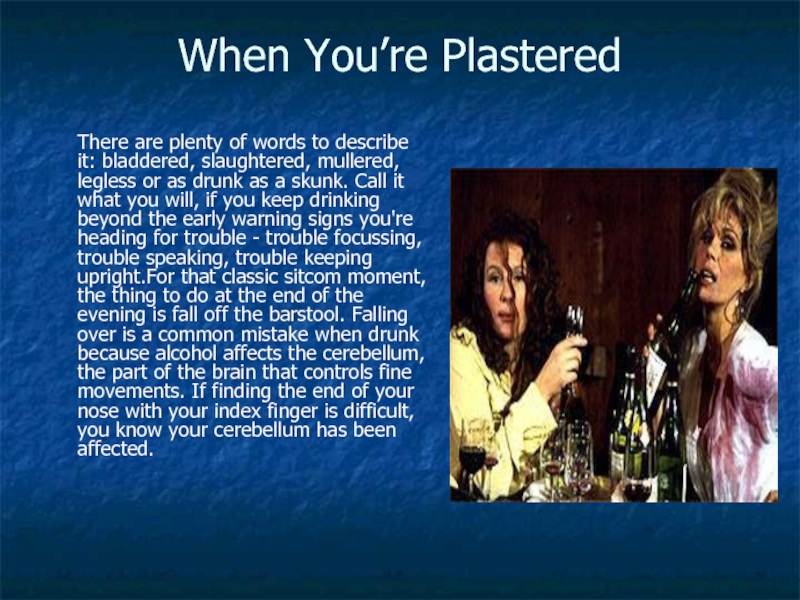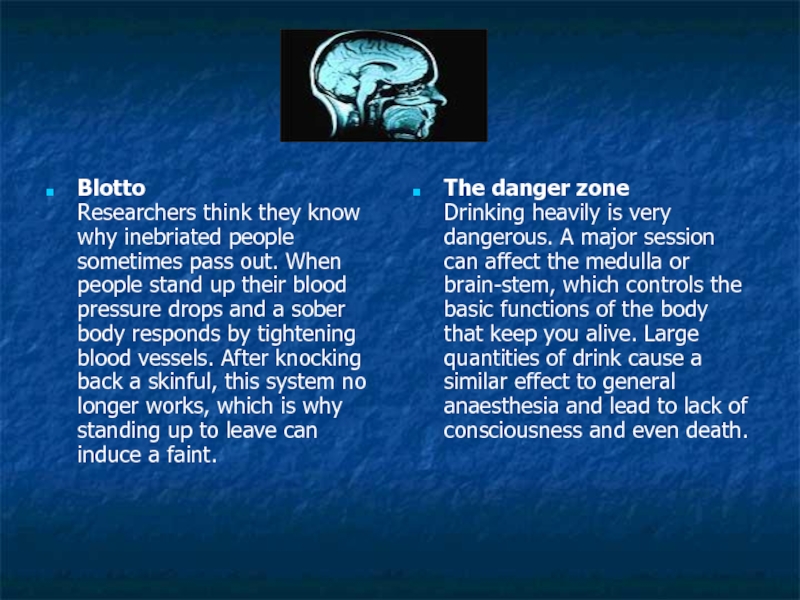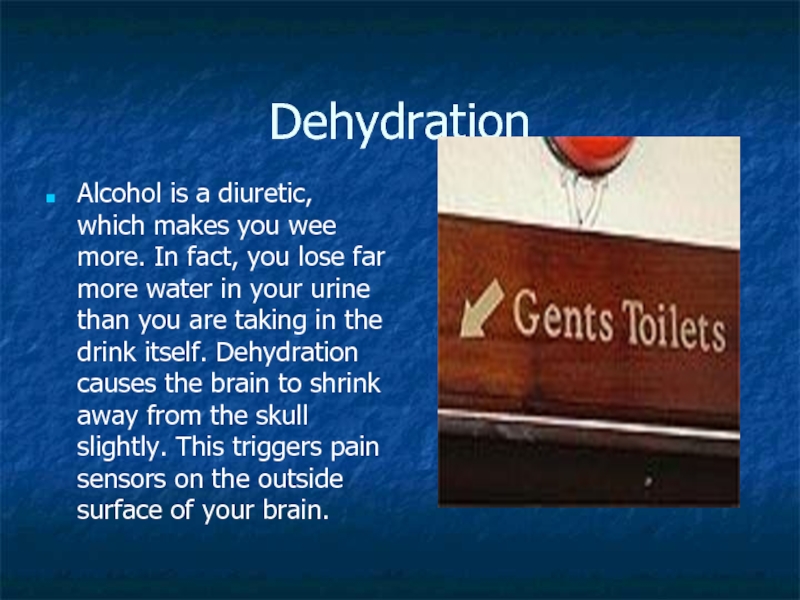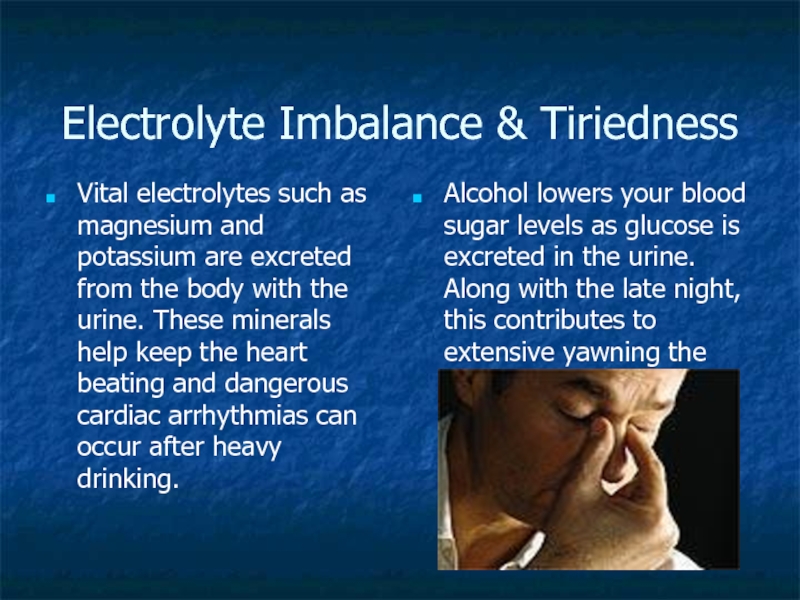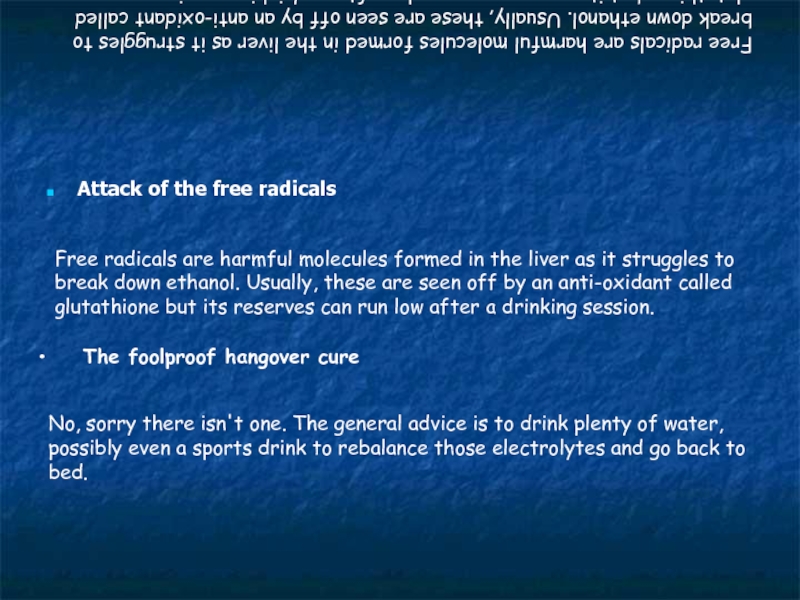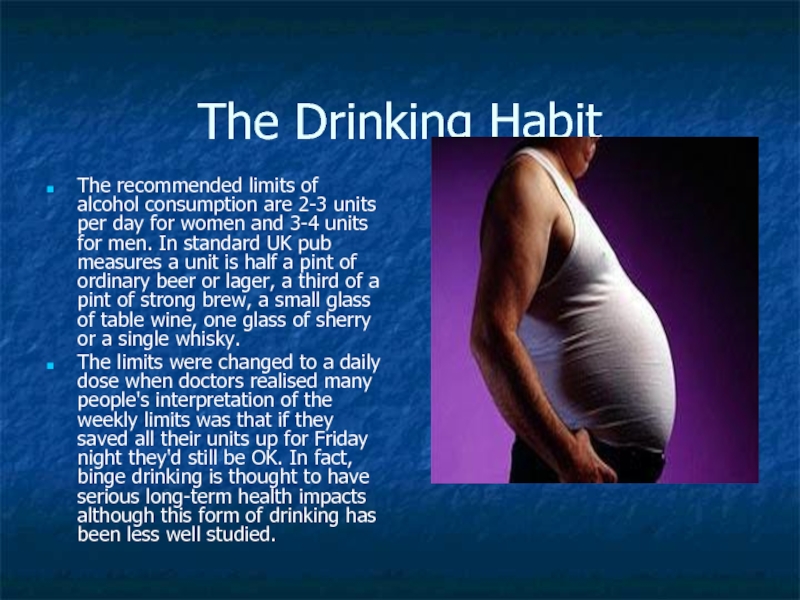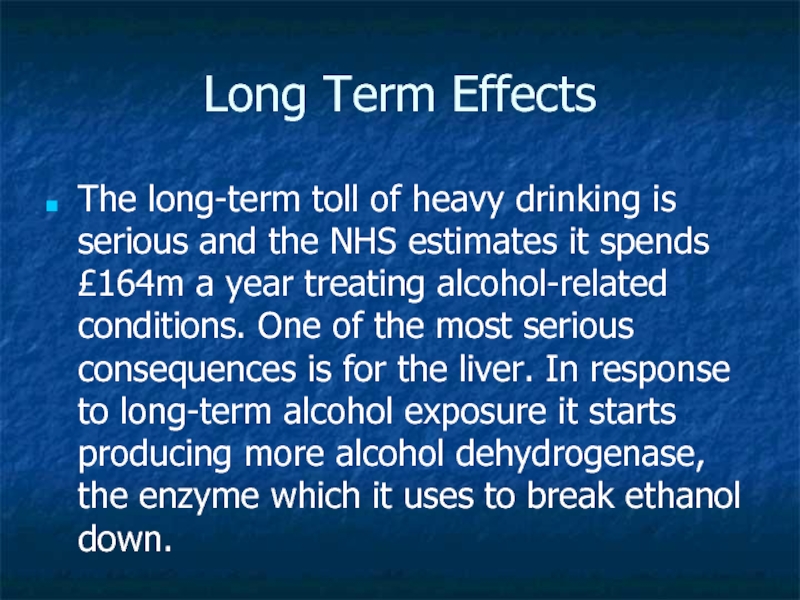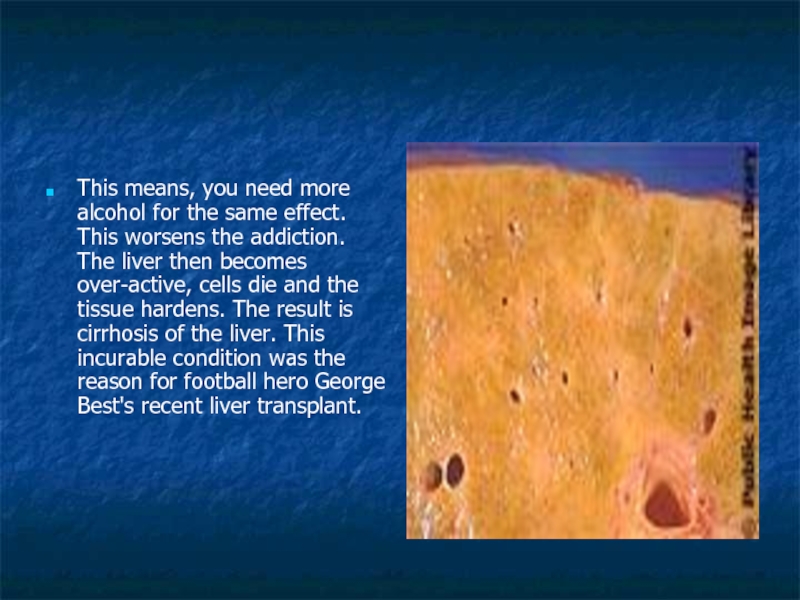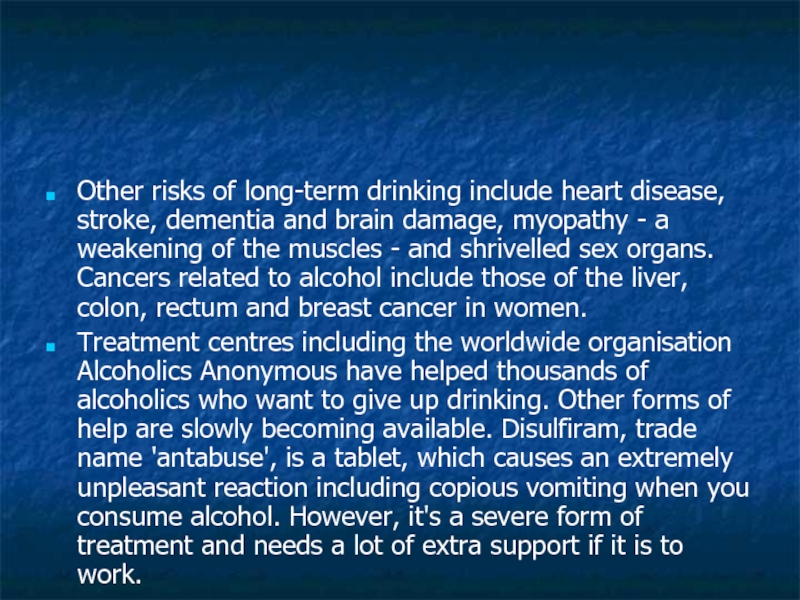- Главная
- Разное
- Дизайн
- Бизнес и предпринимательство
- Аналитика
- Образование
- Развлечения
- Красота и здоровье
- Финансы
- Государство
- Путешествия
- Спорт
- Недвижимость
- Армия
- Графика
- Культурология
- Еда и кулинария
- Лингвистика
- Английский язык
- Астрономия
- Алгебра
- Биология
- География
- Детские презентации
- Информатика
- История
- Литература
- Маркетинг
- Математика
- Медицина
- Менеджмент
- Музыка
- МХК
- Немецкий язык
- ОБЖ
- Обществознание
- Окружающий мир
- Педагогика
- Русский язык
- Технология
- Физика
- Философия
- Химия
- Шаблоны, картинки для презентаций
- Экология
- Экономика
- Юриспруденция
Alcohol. What’s your poison? презентация
Содержание
- 1. Alcohol. What’s your poison?
- 2. Did you know? Yeast is the star
- 3. How Booze Enters Your Body
- 4. Can you take it? Only 20% of
- 5. When You’re Plastered There are
- 6. Blotto Researchers think they know why
- 7. When you’re hungover You've already signed the
- 8. Dehydration Alcohol is a diuretic, which makes
- 9. Electrolyte Imbalance & Tiriedness Vital electrolytes such
- 10. Free radicals are harmful molecules formed in
- 11. The Drinking Habit The recommended limits of
- 12. Long Term Effects The long-term toll of
- 13. This means, you need more alcohol
- 14. Other risks of long-term drinking include
- 15. This powerpoint was kindly donated to www.worldofteaching.com
Слайд 2Did you know?
Yeast is the star of the drinks industry. If
Слайд 3
How Booze Enters Your Body
"Yeah, I've had a few... but I'm
As the drinks continue to flow, things can start to go badly wrong. How fast that happens depends what you're drinking, what you've eaten and your physical build.
Слайд 4Can you take it? Only 20% of the alcohol you swallow is
Слайд 5When You’re Plastered
There are plenty of words to describe it: bladdered,
Слайд 6
Blotto
Researchers think they know why inebriated people sometimes pass out. When
The danger zone
Drinking heavily is very dangerous. A major session can affect the medulla or brain-stem, which controls the basic functions of the body that keep you alive. Large quantities of drink cause a similar effect to general anaesthesia and lead to lack of consciousness and even death.
Слайд 7When you’re hungover
You've already signed the pledge several times over. And
Waking up with a hangover is a sign that you drank far too much last night and your body didn't like it at all. Here's what's happening...
Слайд 8Dehydration
Alcohol is a diuretic, which makes you wee more. In fact,
Слайд 9Electrolyte Imbalance & Tiriedness
Vital electrolytes such as magnesium and potassium are
Alcohol lowers your blood sugar levels as glucose is excreted in the urine. Along with the late night, this contributes to extensive yawning the following day.
Слайд 10Free radicals are harmful molecules formed in the liver as it
Attack of the free radicals
Free radicals are harmful molecules formed in the liver as it struggles to break down ethanol. Usually, these are seen off by an anti-oxidant called glutathione but its reserves can run low after a drinking session.
The foolproof hangover cure
No, sorry there isn't one. The general advice is to drink plenty of water, possibly even a sports drink to rebalance those electrolytes and go back to bed.
Слайд 11The Drinking Habit
The recommended limits of alcohol consumption are 2-3 units
The limits were changed to a daily dose when doctors realised many people's interpretation of the weekly limits was that if they saved all their units up for Friday night they'd still be OK. In fact, binge drinking is thought to have serious long-term health impacts although this form of drinking has been less well studied.
Слайд 12Long Term Effects
The long-term toll of heavy drinking is serious and
Слайд 13
This means, you need more alcohol for the same effect. This
Слайд 14
Other risks of long-term drinking include heart disease, stroke, dementia and
Treatment centres including the worldwide organisation Alcoholics Anonymous have helped thousands of alcoholics who want to give up drinking. Other forms of help are slowly becoming available. Disulfiram, trade name 'antabuse', is a tablet, which causes an extremely unpleasant reaction including copious vomiting when you consume alcohol. However, it's a severe form of treatment and needs a lot of extra support if it is to work.
